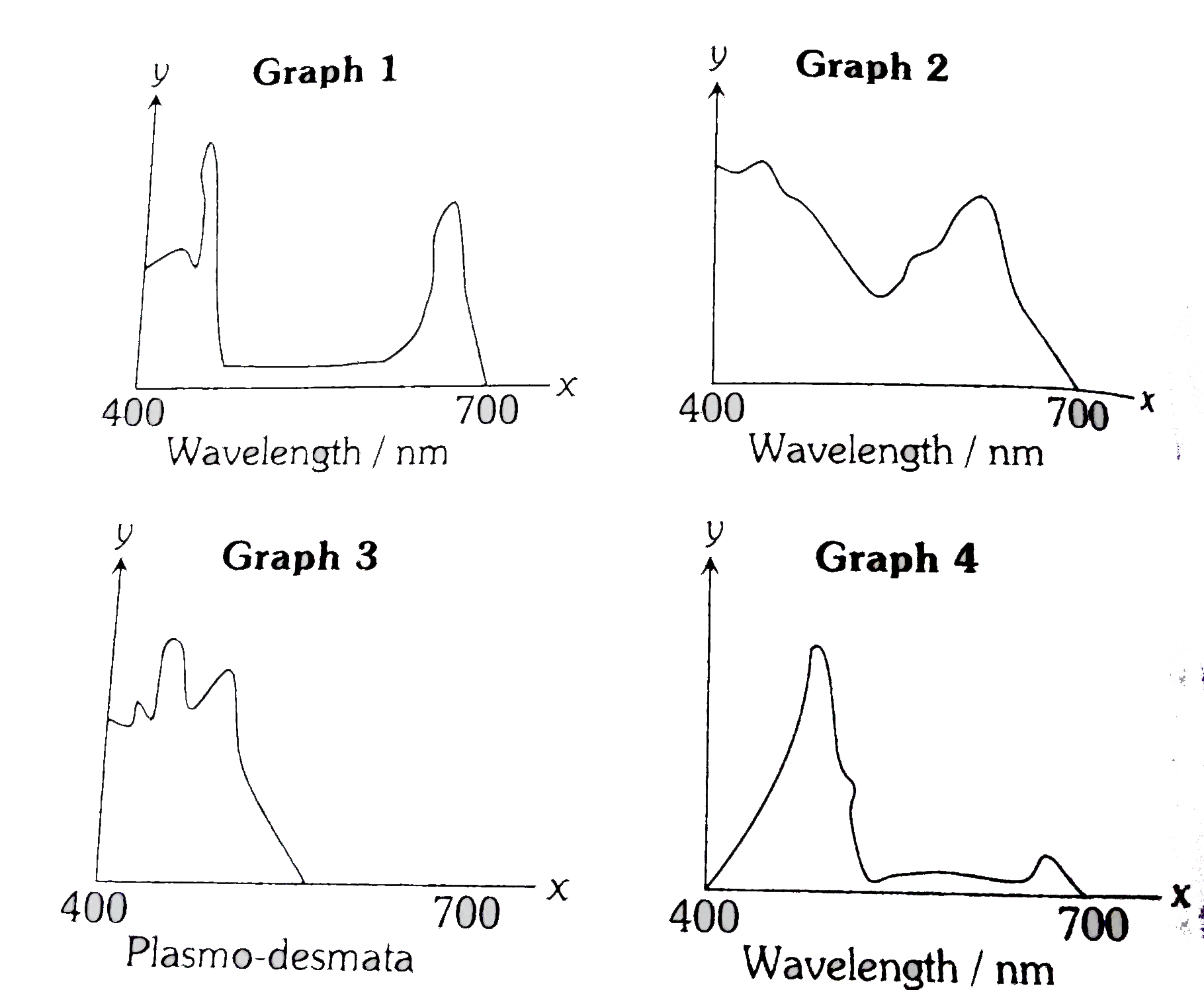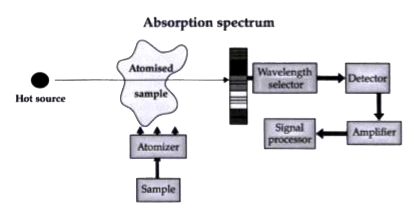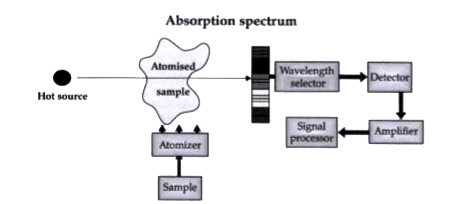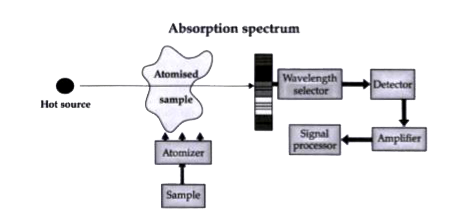A pigment appears yellow-orange in the chromatogram and found in leaves of higher plants, helps
(a) In absorption of light of different wavelength
(b) To prevent oxidative destruction of chlorophyll pigment by light.
(c) By absorbing wavelengths beyond visible spectrum which increases the efficiency of photosynthesis.
Only b
Only b & c
All a,b & c
Only a & b
To solve the question regarding the yellow-orange pigment found in the leaves of higher plants, we will analyze each option step by step.
1. Identify the Pigment:
- The question mentions a yellow-orange pigment found in the leaves of higher plants. This is indicative of carotenoids, which are known for their yellow and orange colors.
2. Evaluate Option (a):
- The first option states that the pigment helps in the absorption of light of different wavelengths.
- Carotenoids do absorb light, but they primarily absorb light in the blue and green wavelengths (around 450-475 nm). They do not cover a wide range of wavelengths, as other pigments like chlorophyll do.
- Conclusion: This option is not correct.
3. Evaluate Option (b):
- The second option states that the pigment helps to prevent oxidative destruction of chlorophyll pigment by light.
- Carotenoids play a protective role by quenching free radicals and preventing oxidative damage to chlorophyll. This is a well-established function of carotenoids in plants.
- Conclusion: This option is correct.
4. Evaluate Option (c):
- The third option states that the pigment absorbs wavelengths beyond the visible spectrum, which increases the efficiency of photosynthesis.
- Carotenoids do not absorb wavelengths beyond the visible spectrum; they primarily absorb within the visible range. The wavelengths they absorb do not significantly extend beyond the visible spectrum, and thus they do not directly increase the efficiency of photosynthesis by absorbing non-visible light.
- Conclusion: This option is incorrect.
5. Final Conclusion:
- Based on the evaluations, the correct answer is option (b), as carotenoids help to prevent oxidative destruction of chlorophyll.
Summary of the Correct Answer:
The yellow-orange pigment found in the leaves of higher plants helps (b) to prevent oxidative destruction of chlorophyll pigment by light.
---
- The question mentions a yellow-orange pigment found in the leaves of higher plants. This is indicative of carotenoids, which are known for their yellow and orange colors.
- The first option states that the pigment helps in the absorption of light of different wavelengths.
- Carotenoids do absorb light, but they primarily absorb light in the blue and green wavelengths (around 450-475 nm). They do not cover a wide range of wavelengths, as other pigments like chlorophyll do.
- Conclusion: This option is not correct.
- The second option states that the pigment helps to prevent oxidative destruction of chlorophyll pigment by light.
- Carotenoids play a protective role by quenching free radicals and preventing oxidative damage to chlorophyll. This is a well-established function of carotenoids in plants.
- Conclusion: This option is correct.
- The third option states that the pigment absorbs wavelengths beyond the visible spectrum, which increases the efficiency of photosynthesis.
- Carotenoids do not absorb wavelengths beyond the visible spectrum; they primarily absorb within the visible range. The wavelengths they absorb do not significantly extend beyond the visible spectrum, and thus they do not directly increase the efficiency of photosynthesis by absorbing non-visible light.
- Conclusion: This option is incorrect.
- Based on the evaluations, the correct answer is option (b), as carotenoids help to prevent oxidative destruction of chlorophyll.
The yellow-orange pigment found in the leaves of higher plants helps (b) to prevent oxidative destruction of chlorophyll pigment by light.
Topper's Solved these Questions
Similar Questions
Wavelengths of which of the following colours of the visible spectrum of light are maximally absorbed by green plants?
View SolutionThree of the graphs below show the absortion spectra of photosynthetic pigments. One graph shows the action spectrum of p'hotosynthesis for a plant containing the pigments.
All the x axis show wavelength. Three of the y axis show light absorption. One y axis shows the rate of photosynthesis

View Solution
Knowledge Check
Which of the following pigments absorbs light and prevents photo-oxidation of chlorophyll ?
AChlorophyll aBChlorophyll bCCarotenoidsDXanthophyllsWavelength of which of the following colours of the visible spectrum of light are maximally absorbed by green plants--
Agreen and yellowBred and blueCgreen and redDblue and yellowA : most of the photosyntheis takes place in the blue and red region of spectum.
R : Action spectrum shows the amount of energy of different wavelength of light absorbed by pigments.AIf both Assertion % Reson ar true and the reason is the correct explanation of the asserition the mark (1)BIf both Assertion % Reason are true but the reason, is not the correct explanation of the assertion ,then mark (2)CIf Assetion is true statement but Reason is false , The mark (3)DIf both Assertion and Reason are false statements, the mark (4)
Chlorophyll present in green leaves of plants absorbs light at 4.620×1014Hz. Calculate the wavelength of radiation in nanometer. Which part of the electromagnetic spectrum does it belong to?
View SolutionRead the following text and answer the following questions on the basis of the same:
Atomic Absorption Spectrometer: The atomic absorption (AA) spectrometer is used to analyze metals at very low concentrations, typically in the parts per million (ppm) or parts per billion (ppb) ranges. A liquid sample containing dissolved material whose concentration is to be measured is aspirated into a thin, wide AA flame, or is introduced into a small carbon furnace which is heated to a high temperature.

Basic Principle of AAS is the measurement of absorption of radiation by free atoms. The total amount of absorption depends on the number of free atoms present and the degreee to which the free atoms absorb the radiation. At the high temperature of the AA flame, the sample is broken down into atoms using an atomizer and it is the concentration of these atoms that is measured. Sample in the form of solution is used. It is broken up into a fine mist with the help of an atomizer. When the mist reaches the flame, the intense heat breaks up the sample into its individual atoms. When a photon coming out from the hot source hits an atom and the energy of the photon is equal to the gap between two electron energy levels of the atom, then the electron in the lower energy level absorb the photon and jumps up to the higher energy level. If the photon energy does not correspond to the difference between two energy levels, then the photon will not be absorbed (it may be scattered away). Hence in the spectrum, the wavelength corresponding to the absorbed photons is observed as black lines as shown in the following spectrum of Hydrogen. The dark lines correspon to the frequencies of light those have been absorbed by the sample element. Using this process, a source of photons (generally a white light) of various energies is used to obtain the absorption spectra of different materials and to identify them.
What should be the concentration of metal for analysis using Atomic Absorption Spectrometer?
View SolutionRead the following text and answer the following questions on the basis of the same:
Atomic Absorption Spectrometer: The atomic absorption (AA) spectrometer is used to analyze metals at very low concentrations, typically in the parts per million (ppm) or parts per billion (ppb) ranges. A liquid sample containing dissolved material whose concentration is to be measured is aspirated into a thin, wide AA flame, or is introduced into a small carbon furnace which is heated to a high temperature.

Basic Principle of AAS is the measurement of absorption of radiation by free atoms. The total amount of absorption depends on the number of free atoms present and the degreee to which the free atoms absorb the radiation. At the high temperature of the AA flame, the sample is broken down into atoms using an atomizer and it is the concentration of these atoms that is measured. Sample in the form of solution is used. It is broken up into a fine mist with the help of an atomizer. When the mist reaches the flame, the intense heat breaks up the sample into its individual atoms. When a photon coming out from the hot source hits an atom and the energy of the photon is equal to the gap between two electron energy levels of the atom, then the electron in the lower energy level absorb the photon and jumps up to the higher energy level. If the photon energy does not correspond to the difference between two energy levels, then the photon will not be absorbed (it may be scattered away). Hence in the spectrum, the wavelength corresponding to the absorbed photons is observed as black lines as shown in the following spectrum of Hydrogen. The dark lines correspon to the frequencies of light those have been absorbed by the sample element. Using this process, a source of photons (generally a white light) of various energies is used to obtain the absorption spectra of different materials and to identify them.
What is the basic principle of Atomic Absorption Spectrophotometer?
View SolutionRead the following text and answer the following questions on the basis of the same:
Atomic Absorption Spectrometer: The atomic absorption (AA) spectrometer is used to analyze metals at very low concentrations, typically in the parts per million (ppm) or parts per billion (ppb) ranges. A liquid sample containing dissolved material whose concentration is to be measured is aspirated into a thin, wide AA flame, or is introduced into a small carbon furnace which is heated to a high temperature.

Basic Principle of AAS is the measurement of absorption of radiation by free atoms. The total amount of absorption depends on the number of free atoms present and the degreee to which the free atoms absorb the radiation. At the high temperature of the AA flame, the sample is broken down into atoms using an atomizer and it is the concentration of these atoms that is measured. Sample in the form of solution is used. It is broken up into a fine mist with the help of an atomizer. When the mist reaches the flame, the intense heat breaks up the sample into its individual atoms. When a photon coming out from the hot source hits an atom and the energy of the photon is equal to the gap between two electron energy levels of the atom, then the electron in the lower energy level absorb the photon and jumps up to the higher energy level. If the photon energy does not correspond to the difference between two energy levels, then the photon will not be absorbed (it may be scattered away). Hence in the spectrum, the wavelength corresponding to the absorbed photons is observed as black lines as shown in the following spectrum of Hydrogen. The dark lines correspon to the frequencies of light those have been absorbed by the sample element. Using this process, a source of photons (generally a white light) of various energies is used to obtain the absorption spectra of different materials and to identify them.
What happens when a photon hits an atom and the energy of the photon is not equal to the gap between two electron energy levels of the atom?
View SolutionRead the following text and answer the following questions on the basis of the same:
Atomic Absorption Spectrometer: The atomic absorption (AA) spectrometer is used to analyze metals at very low concentrations, typically in the parts per million (ppm) or parts per billion (ppb) ranges. A liquid sample containing dissolved material whose concentration is to be measured is aspirated into a thin, wide AA flame, or is introduced into a small carbon furnace which is heated to a high temperature.

Basic Principle of AAS is the measurement of absorption of radiation by free atoms. The total amount of absorption depends on the number of free atoms present and the degreee to which the free atoms absorb the radiation. At the high temperature of the AA flame, the sample is broken down into atoms using an atomizer and it is the concentration of these atoms that is measured. Sample in the form of solution is used. It is broken up into a fine mist with the help of an atomizer. When the mist reaches the flame, the intense heat breaks up the sample into its individual atoms. When a photon coming out from the hot source hits an atom and the energy of the photon is equal to the gap between two electron energy levels of the atom, then the electron in the lower energy level absorb the photon and jumps up to the higher energy level. If the photon energy does not correspond to the difference between two energy levels, then the photon will not be absorbed (it may be scattered away). Hence in the spectrum, the wavelength corresponding to the absorbed photons is observed as black lines as shown in the following spectrum of Hydrogen. The dark lines correspon to the frequencies of light those have been absorbed by the sample element. Using this process, a source of photons (generally a white light) of various energies is used to obtain the absorption spectra of different materials and to identify them.
How the sample for analysis is deriven to atomic state in AAS?
View Solution
